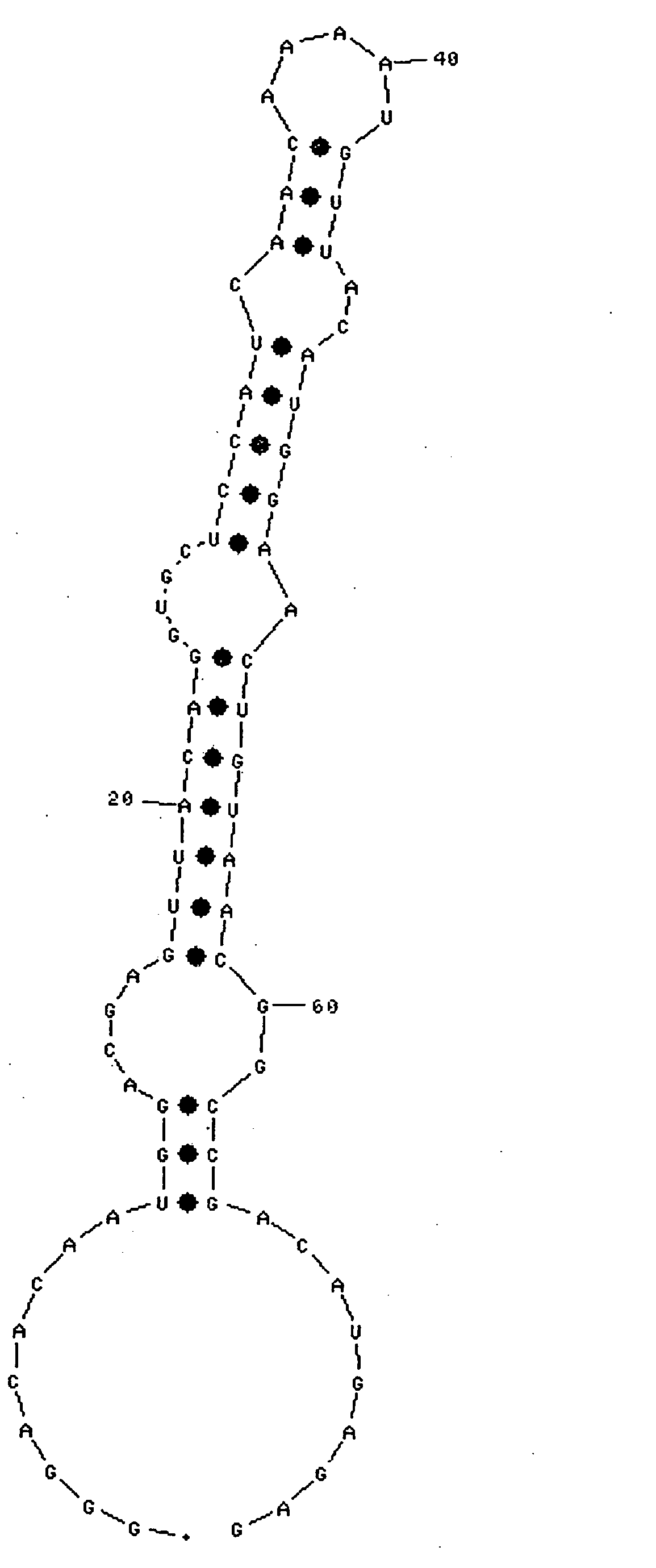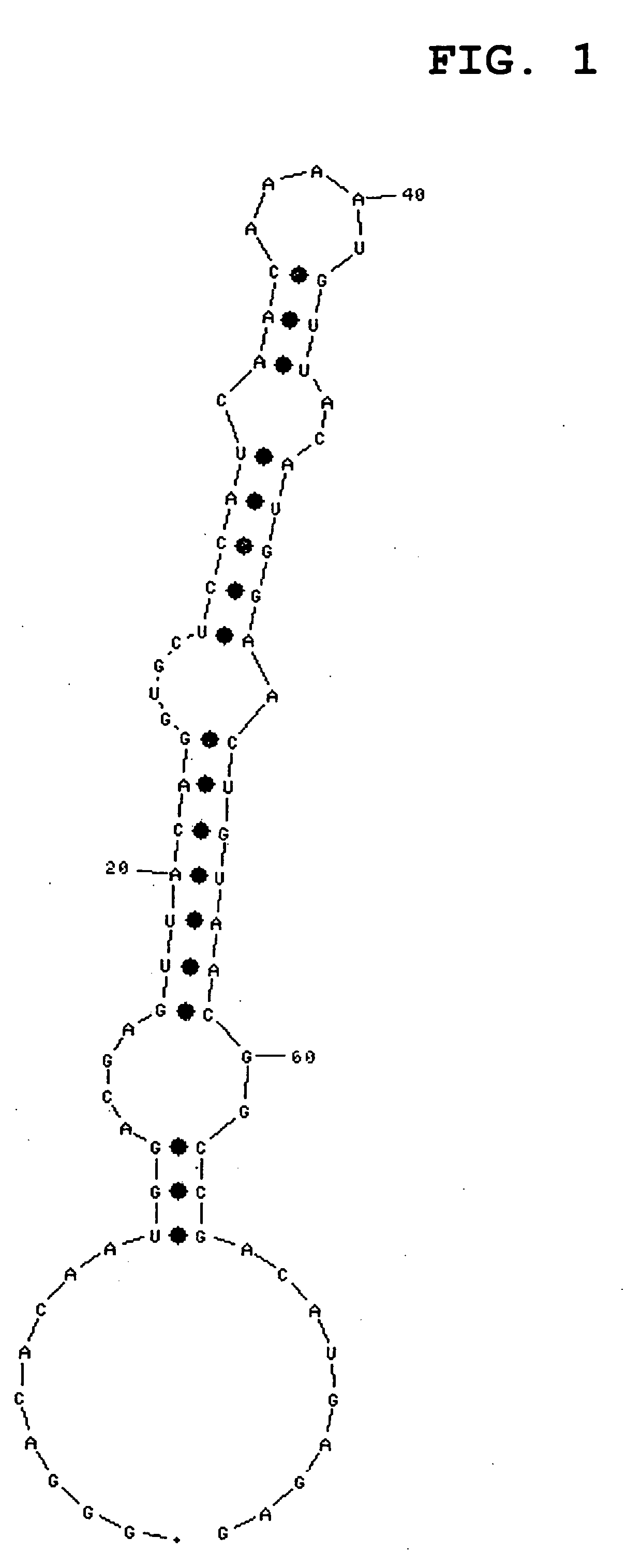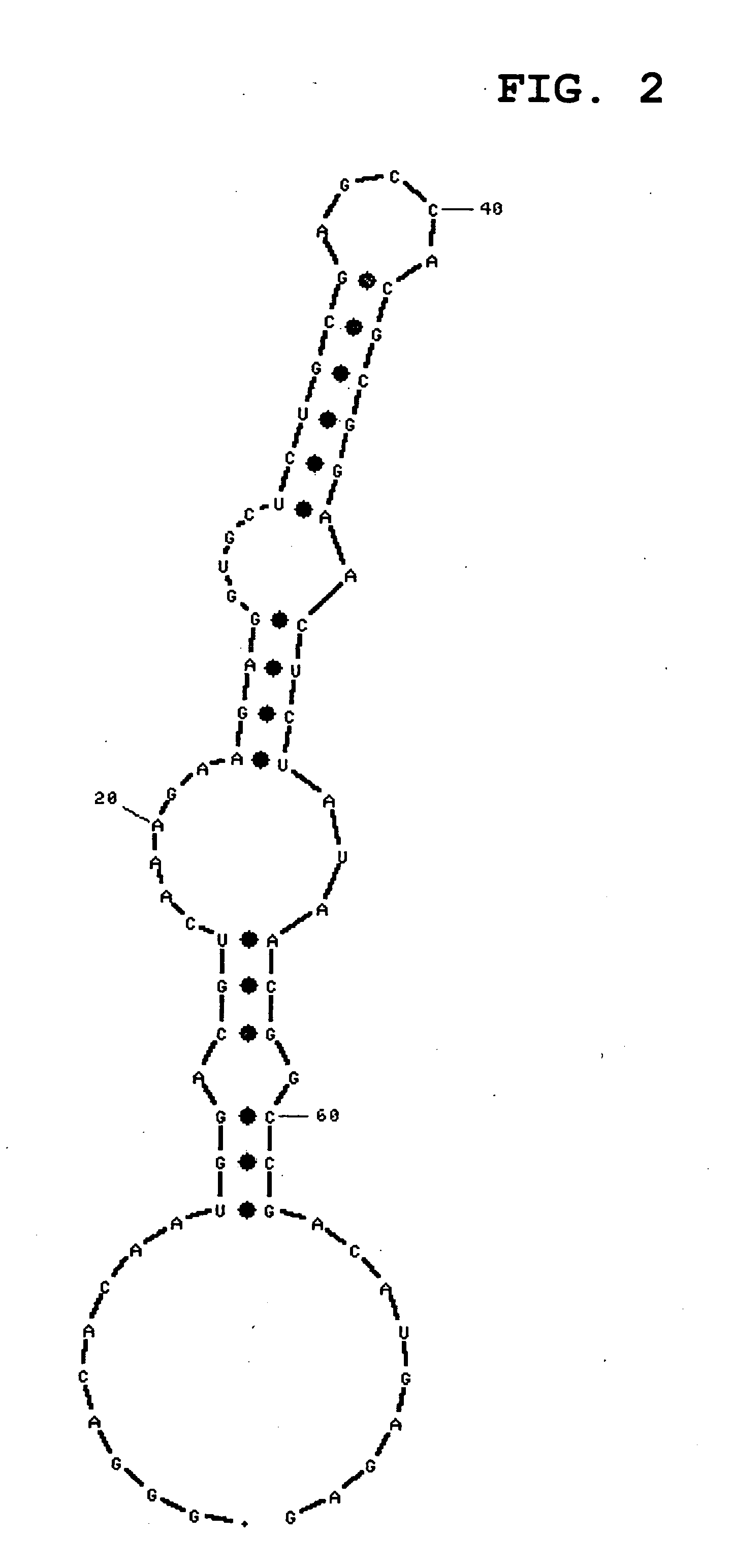Nucleic acid capable of binding to immunoglobulin G and use thereof
a technology of immunoglobulin and nucleic acid, which is applied in the field of nucleic acid having binding affinity for immunoglobulin g, can solve the problems of not being able to achieve sufficient therapeutic effect, not being able to obtain sufficient sensitivity, and taking a lot of time to bind a labeling substan
- Summary
- Abstract
- Description
- Claims
- Application Information
AI Technical Summary
Problems solved by technology
Method used
Image
Examples
example 1
Preparation of Nucleic Acid that Binds Specifically to IgG
[0127]A nucleic acid that binds specifically to IgG was prepared using the SELEX method. SELEX was performed by the method of Ellington et al. (Ellington and Szostak, Nature 346, 818-822, 1990) and the method of Tuerk et al. (Tuerk and Gold, Science 249, 505-510, 1990) with improvements. Used as the target substance was a chimera (IgG1-Fc, manufactured by R&D Systems) of an Fc region of human IgG1 with a histidine tag (Pro100 to Lys330) and RANK (Receptor activator of NF-κB). This chimera had been expressed using mouse myeloma cells. The RNA used in the first round was obtained by transcribing a DNA obtained by chemical synthesis, using the DuraScribe™ T7 Transcription Kit (manufactured by Epicentre). The RNA obtained by this method has been fluorated at the 2′-position of the ribose of each pyrimidine base-containing nucleotide. Used as the DNA template was a DNA 90 residue long having a primer sequence on each side of a 40-...
example 2
Evaluation of Binding Affinity
[0134]The binding affinities of the RNAs shown by SEQ ID NO:1 to 9 for human IgG-Fc were determined by a surface plasmon resonance method. Used for the measurements was BIAcore 2000 manufactured by BIAcore. Used as the sensor chip was the SA chip having streptavidin immobilized thereon. Bound thereto was about 1000 RU of 16-residue Poly dT having biotin bound to the 5′ end thereof. The RNA for use as the ligand had 16-residue Poly A added to the 3′ end thereof, and immobilized to the SA chip via a bond between dT and A. The amount immobilized was adjusted to about 1000 RU by injecting 60 μL at a concentration of 0.01 μg / μL. 70 μL of IgG-Fc for analyte (manufactured by Athens Research & Technology), adjusted to 0.6 μM, was injected. The running buffer used had the same components as those of the solution A used in SELEX.
[0135]Sensorgrams obtained by immobilizing the RNA shown by SEQ ID NO:1 or 3, and injecting IgG-Fc, are shown in FIG. 24 or 25, respecti...
example 3
Miniaturization of RNA Aptamers
[0141]The lengths of the RNAs shown by SEQ ID NO:1 to 9 and 19 to 23 are about 70 residues; if the length can be shortened to about 40 residues or less, it will become possible to prepare an RNA aptamer by chemical synthesis. Hence, attempts were made to miniaturize the RNAs shown by SEQ ID NO:1 to 9 and 19 to 23. Here, the RNAs shown by SEQ ID NO:1 to 9 and 19 to 23 have been fluorated at the 2′-position of the ribose of each pyrimidine base-containing nucleotide (U, C), and the purine base-containing nucleotides (A, G) are of the natural RNA type. All short RNAs newly prepared in this Example have been fluorated at the 2′-position of the ribose of the pyrimidine base.
[0142]First, miniaturization was attempted on the basis of the RNA shown by SEQ ID NO:1. The RNA shown by SEQ ID NO:10 was prepared by cutting the 5′-end GGGACAC and 3′-end GAGAG of the RNA shown by SEQ ID NO:1, and adding GG to the 5′ end thereof for transcription. The RNA shown by SEQ ...
PUM
| Property | Measurement | Unit |
|---|---|---|
| molecular weight | aaaaa | aaaaa |
| pH | aaaaa | aaaaa |
| dissociation constant | aaaaa | aaaaa |
Abstract
Description
Claims
Application Information
 Login to View More
Login to View More - R&D
- Intellectual Property
- Life Sciences
- Materials
- Tech Scout
- Unparalleled Data Quality
- Higher Quality Content
- 60% Fewer Hallucinations
Browse by: Latest US Patents, China's latest patents, Technical Efficacy Thesaurus, Application Domain, Technology Topic, Popular Technical Reports.
© 2025 PatSnap. All rights reserved.Legal|Privacy policy|Modern Slavery Act Transparency Statement|Sitemap|About US| Contact US: help@patsnap.com



